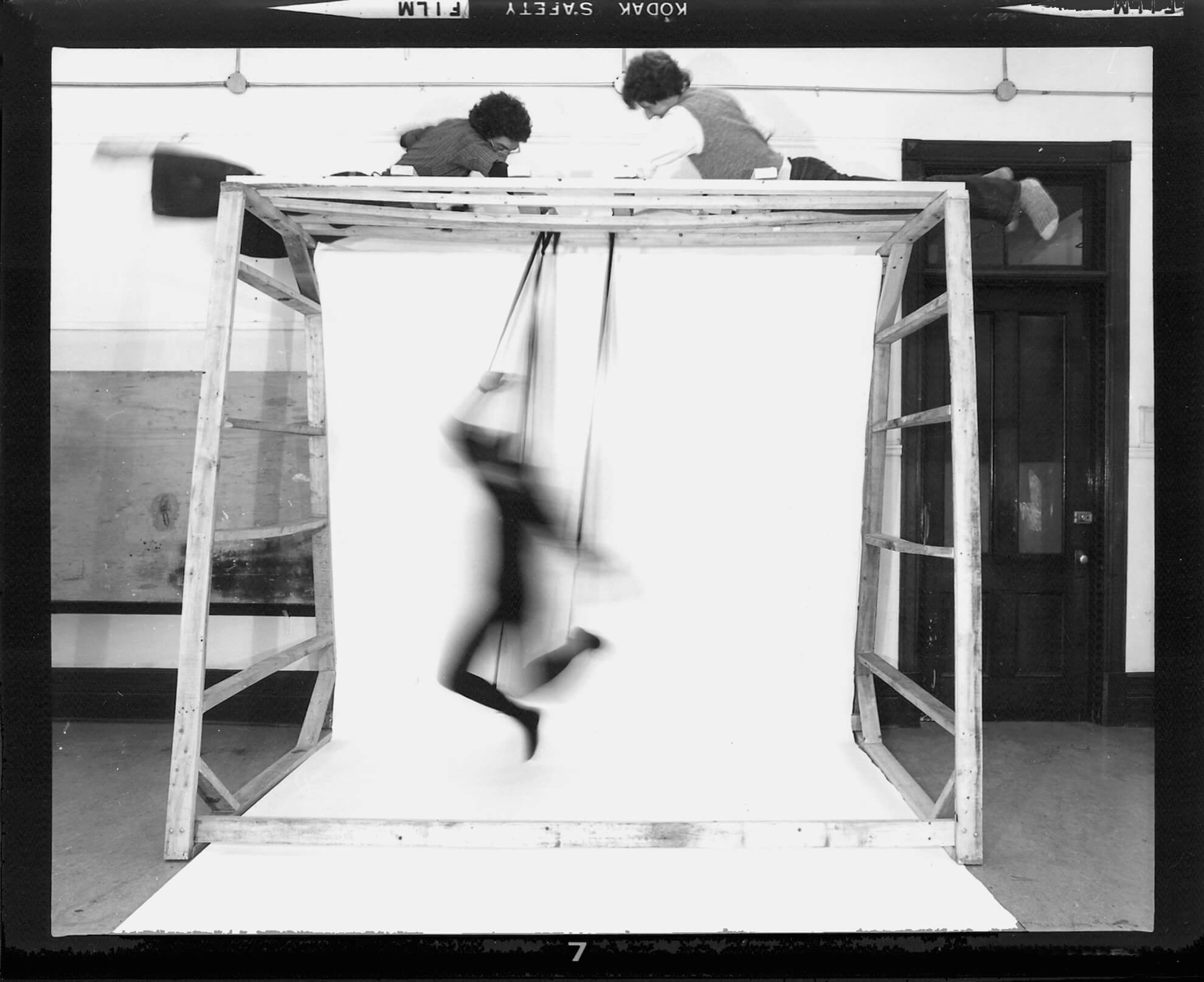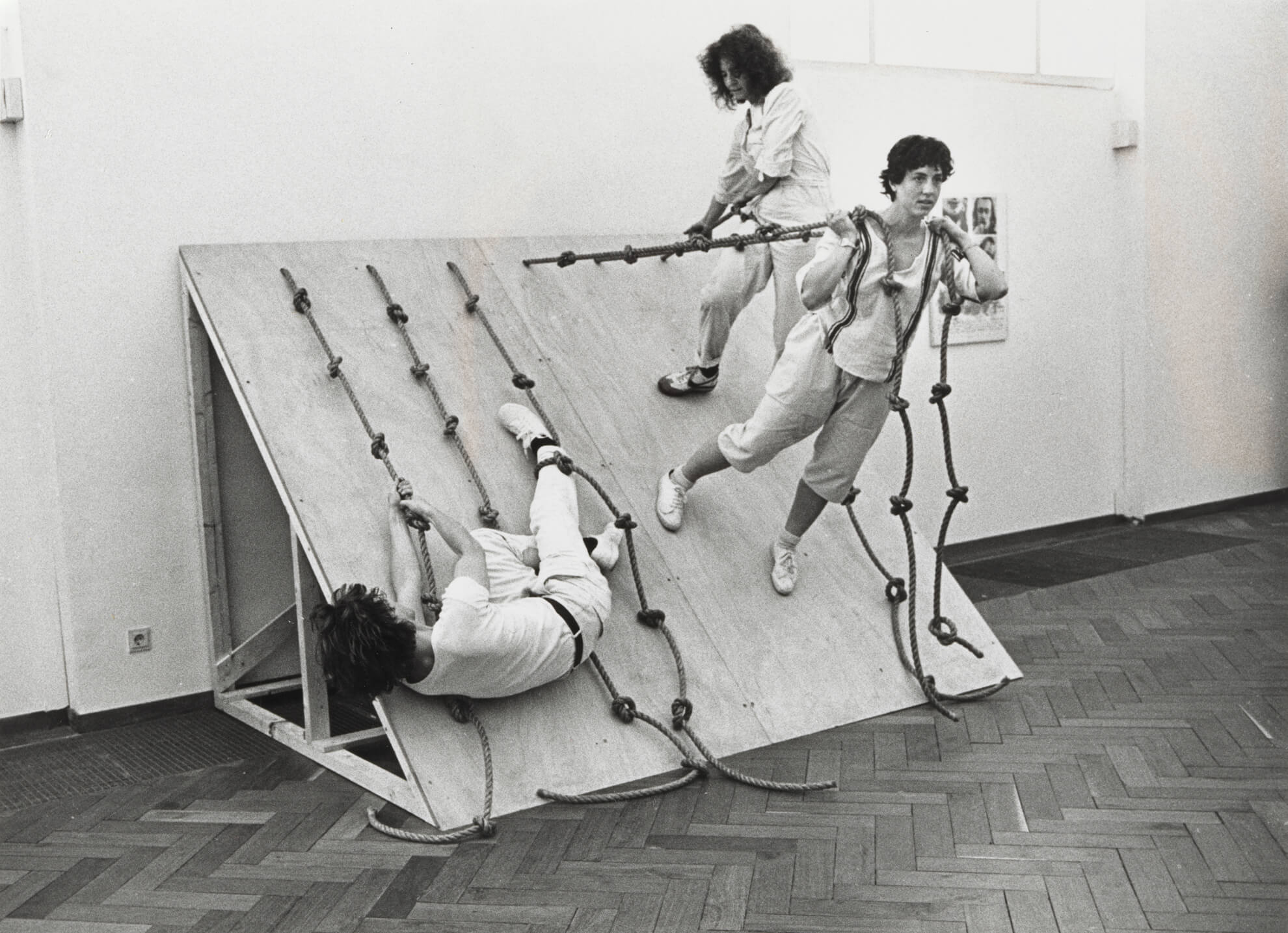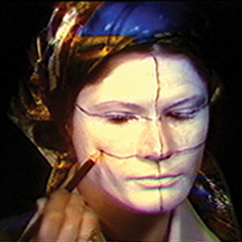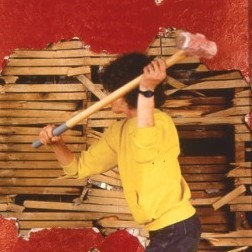Choreographed Puppets 1976–77

Suzy Lake, Choreographed Puppets Mural, Negative #7, 1976 (negative), printed 2011
Archival pigment print; six laminated black and white chromogenic print panels, print wrapped around Dibond substrate with Velcro for attaching to exhibition wall, 274 x 341 cm
Georgia Scherman Projects, Toronto
Choreographed Puppets is a breakthrough piece in Lake’s development as an artist. Her previous series from the early 1970s, such as Miss Chatelaine, 1973, had explored issues of identity and appearance using a variation of a grid pattern. In Choreographed Puppets, Lake turns to themes of dominance and resistance, presented in a series of individual photographs organized in a linear pattern. Lake describes the work as “control in the hands of another” that results in the loss of the performer’s identity. She further explores similar themes in related works like Against the Wall, 1977, imPOSITIONS, 1977, and Vertical Pull, 1977. The images in Choreographed Puppets appear fuzzy, which was unusual in photography at the time; they are painterly, not precise, and in character.

The work is presented as a series of large-scale photographs that depict a scaffold, 10 feet by 12 feet by 8 feet, that Lake built in her studio at Concordia University in Montreal while she was studying for her Master of Fine Arts. Wearing a tunic with a strap, Lake is suspended from the scaffold, feet not touching the ground. Also included in the photographs are two “puppeteers,” positioned on top of the structure and holding straps that control her arms and legs in order to manipulate her movement. Throughout this theatrical performance, an assistant took photographs at regular intervals, with the shutter speed set at a thirtieth and a fiftieth of a second. After Lake selected the images to include in Choreographed Puppets, she presented them as silver gelatin black and white fibre-based analog prints. They give the impression of a behind-the-scenes view of the performance, without suggesting any particular beginning or conclusion. The scaffold and the process create a frame for the manipulation of Lake’s blurred body where the artist is unrecognizable. In its original showing and again in the retrospective Introducing Suzy Lake at the Art Gallery of Ontario in 2014, Lake installed the scaffold as part of the exhibition.
The work is often understood as a feminist piece but also holds a larger meaning—the manipulation any individual might feel at times as part of humanity as a whole. However, it can also have an alternative interpretation: despite her lack of physical control, Lake remains the director of the scene, establishing the structure and the script for the unpredictable performance that occurs. Understood in this way, Choreographed Puppets reflects the influence of experimental dancers such as Simone Forti (b.1935) and Yvonne Rainer (b.1934), who rejected a predetermined outcome in favour of improvisation, responding to a loose set of fixed rules. (The word “choreographed” in the title is surely significant.) Forti’s Hangers, 1961, from her performance series Five Dance Constructions and Some Other Things, is an important precursor: three looped ropes hang from the ceiling and three performers stand on the loops while four other performers mingle between them, leading to unpredictable motion and an inability among the performers to control the ropes’ sway. In Lake’s investigation, however, she performs for the camera and is able to capture this element of uncontrollability through the depiction of frenetic motion as her legs dangle above the floor.
As William A. Ewing writes, “The blur was obviously the key. At the time, blur was much frowned upon in photography, considered a betrayal of the almost puritanical documentary ethos. Here it evoked a feeling of drawing, or a quick sketch. More importantly, it held back information, adding an element of mystery.”

 About the Author
About the Author
 More Online Art Books
More Online Art Books
 Acknowledgements
Acknowledgements